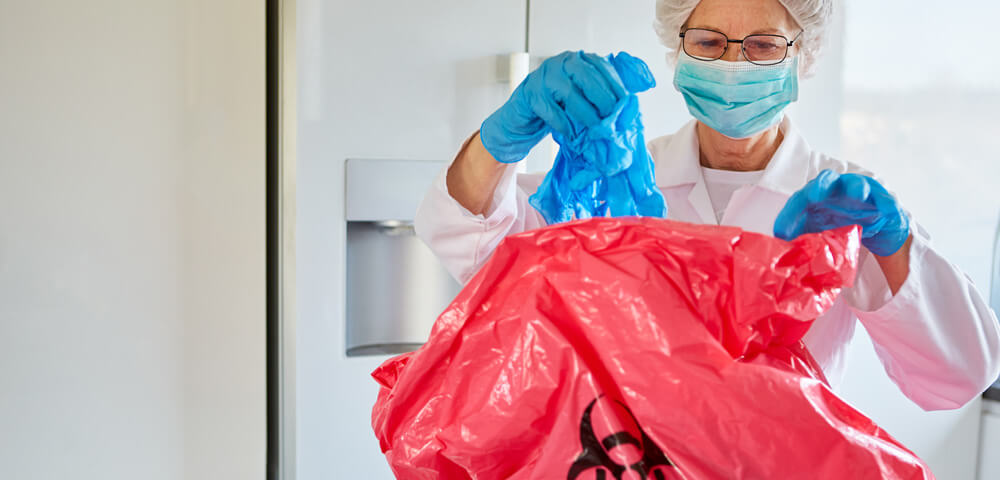Introduction
Medical waste disposal is a critical aspect of maintaining a safe and healthy environment in healthcare facilities. Ensuring compliance with Occupational Safety and Health Administration (OSHA) guidelines is crucial to prevent potential hazards and protect both healthcare workers and the public. In New York, where medical waste generation is significant, it is essential for healthcare facilities to implement best practices for proper waste management. This article will explore the best practices for medical waste disposal in New York, highlighting the importance of compliance with OSHA guidelines.
Best Waste Management Service in NY: A Key Factor for Compliance
Choosing the best waste management service provider is crucial when it comes to ensuring compliance with OSHA guidelines for medical waste disposal in New York. A reputable service provider will have the experience, expertise, and resources necessary to handle medical waste safely and efficiently. By partnering with a reliable waste management service, healthcare facilities can ensure that their waste disposal practices align with OSHA regulations.
Hazardous Waste Disposal Service New York: The Importance of Proper Handling
Proper handling of hazardous waste is a fundamental aspect of ensuring compliance with OSHA guidelines for medical waste disposal in New York. Healthcare facilities must identify and segregate hazardous waste from other types of medical waste promptly. This segregation prevents potential contamination and ensures that hazardous waste receives appropriate treatment and disposal methods.
New York Medical Waste Disposal: Understanding Regulatory Requirements
To achieve compliance with OSHA guidelines for medical waste disposal in New York, healthcare facilities must understand the regulatory requirements specific to their state. The Department of Environmental Conservation (DEC) regulates medical waste management in New York, outlining guidelines and regulations that healthcare facilities must follow. Familiarizing themselves with these requirements helps healthcare professionals maintain a safe working environment while adhering to legal obligations.
Pharmaceutical Waste Management: A Critical Component of Compliance
Pharmaceutical waste poses unique challenges when it comes to medical waste disposal in New York. Improper disposal of pharmaceutical waste can result in environmental contamination and potential harm to human health. Healthcare facilities must implement effective pharmaceutical waste management strategies, including proper identification, segregation, and disposal methods. By doing so, they ensure compliance with Pharmaceutical Waste Management OSHA guidelines and protect the environment.

Medical Waste Disposal and Compliance Services: Streamlining Operations
Utilizing medical waste disposal and compliance services can streamline operations for healthcare facilities in New York. These specialized services offer comprehensive solutions for waste management, including collection, transportation, treatment, and disposal. By outsourcing their medical waste disposal needs, healthcare facilities can focus on providing quality patient care while ensuring compliance with OSHA guidelines.

FAQs
Q1: What are the OSHA regulations for medical waste disposal in New York?
A1: The OSHA regulations for medical waste disposal in New York are outlined by the Department of Environmental Conservation (DEC). These regulations specify requirements for waste segregation, packaging, labeling, storage, transportation, and treatment methods.
Q2: How often should medical waste be disposed of?
A2: Medical waste should be disposed of regularly to prevent accumulation and potential hazards. The frequency of disposal may vary depending on the volume of waste generated by a healthcare facility. It is recommended to establish a schedule based on the facility's specific needs and regulatory requirements.
Q3: Are there specific guidelines for pharmaceutical waste disposal in New York?
A3: Yes, pharmaceutical waste disposal in New York follows specific guidelines set forth by the DEC. These guidelines require healthcare facilities to properly identify and segregate pharmaceutical waste from other types of medical waste. Additionally, they outline appropriate disposal methods to prevent environmental contamination.
Q4: How can healthcare facilities ensure compliance with OSHA guidelines?
A4: Healthcare facilities can ensure compliance with OSHA guidelines by implementing best practices such as proper waste segregation, labeling, and storage. They can also partner with reputable waste management service providers to streamline their waste disposal processes and stay up to date with regulatory requirements.
Q5: What are the consequences of non-compliance with OSHA guidelines?
A5: Non-compliance with OSHA guidelines can result in serious consequences for healthcare facilities, including hefty fines, legal penalties, and reputational damage. It can also pose risks to the health and safety of healthcare workers and the general public.
Q6: Is training required for healthcare professionals involved in medical waste disposal?
A6: Yes, training is required for healthcare professionals involved in medical waste disposal. OSHA regulations mandate that employees receive proper training on handling, packaging, labeling, and storage of medical waste. This training ensures that they understand the potential hazards associated with medical waste and know how to mitigate them effectively.
Conclusion
Ensuring compliance with OSHA guidelines for medical waste disposal is crucial for healthcare facilities in New York. By following best practices, partnering with reputable waste management service providers, and staying updated on regulatory requirements, healthcare professionals can maintain a safe working environment while protecting public health and the environment. Proper handling, segregation, treatment, and disposal of medical waste are essential steps towards achieving compliance and promoting a sustainable healthcare system in New York.